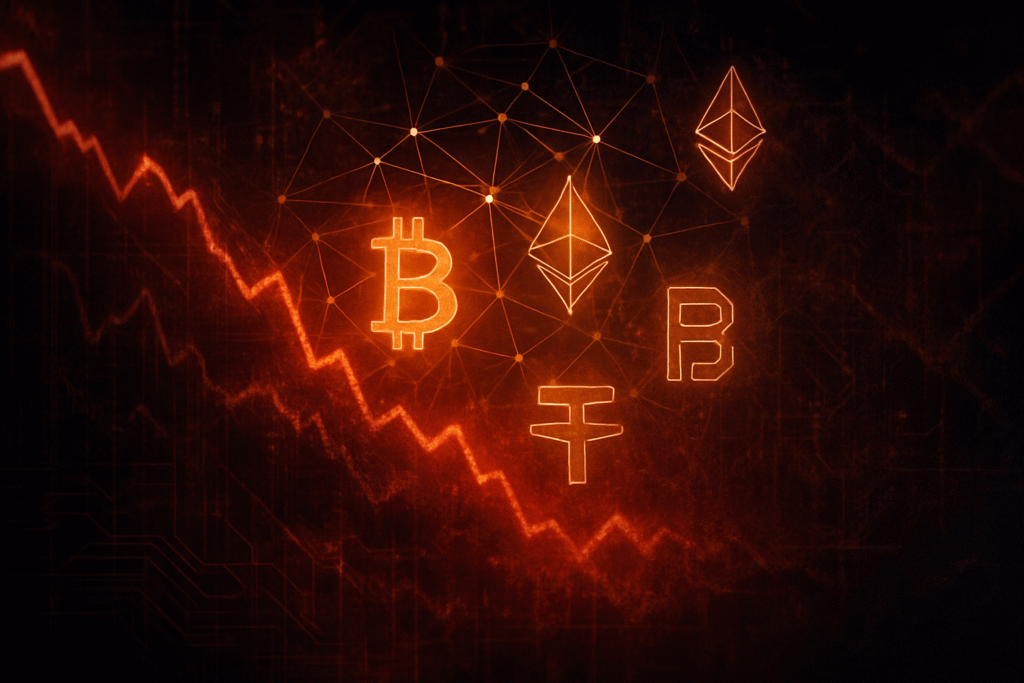
The cryptocurrency market, a landscape famed for its innovation and potential for unprecedented gains, is also a treacherous terrain where the unwary can fall victim to sophisticated manipulation. Recent events, epitomized by the rise and fall of schemes akin to "GROK93N," serve as a stark reminder of the inherent dangers lurking within the digital asset space, particularly the insidious threat of social media-driven pump-and-dump operations. These schemes, designed to artificially inflate asset prices before a coordinated sell-off, have repeatedly led to devastating investor ruin, eroding trust and stability within the broader crypto ecosystem.
The immediate aftermath of such schemes typically sees a panicked sell-off, leaving a trail of financially decimated retail investors. The "GROK93N" phenomenon, while symbolic of a broader trend rather than a single, isolated event, highlights a critical vulnerability: the ease with which hype and misinformation can be weaponized on platforms like X (formerly Twitter), Telegram, and Discord to exploit the aspirations of quick riches. As of October 2, 2025, the ongoing prevalence of these manipulative tactics underscores an urgent need for enhanced investor awareness and robust protective measures to safeguard the integrity of the crypto market.
Market Impact and Price Action
The lifecycle of a "GROK93N"-like scheme is a predictable, yet devastating, pattern of artificial price inflation followed by a catastrophic collapse. Typically, orchestrators target low-volume, low-market-capitalization cryptocurrencies—often referred to as "penny cryptos" or obscure altcoins—because their smaller market size makes them highly susceptible to manipulation with relatively modest capital. The initial phase involves the secret accumulation of these tokens by the perpetrators, laying the groundwork for the impending "pump."
Once positions are established, the social media machinery kicks into high gear. Coordinated messaging across various platforms, often involving undisclosed influencer endorsements and fabricated news, creates a frenzy of FOMO (Fear Of Missing Out). This drives a surge in buying pressure from unsuspecting retail investors, causing the token's price to skyrocket—sometimes by hundreds or even thousands of percent in a matter of hours or days. Trading volumes explode, but this liquidity is often shallow and concentrated among the manipulators. For instance, historical parallels can be drawn to incidents like the Viacoin or Verge pumps in 2018, where prices surged over 300% due to coordinated social media hype, only to crash shortly after.
The "dump" phase is swift and brutal. Once the price reaches a predetermined peak, or when sufficient retail money has flowed in, the orchestrators systematically offload their holdings, cashing in on their profits. This mass sell-off floods the market, causing an immediate and precipitous price drop. Investors who bought at the peak are left holding rapidly devaluing, often worthless, assets. This phenomenon was starkly evident in the 2023 Chainalysis report, which indicated that approximately 54% of ERC-20 tokens listed on decentralized exchanges displayed patterns suggestive of pump-and-dump schemes, highlighting the persistent vulnerability of the DeFi space to such manipulations.
Community and Ecosystem Response
The crypto community's response to "GROK93N" and similar schemes is a complex tapestry of outrage, frustration, and a growing call for accountability. On platforms like X and Reddit, initial euphoria and speculative fervor during the "pump" phase quickly devolve into anger and despair as the "dump" unfolds. Discussions are rife with warnings, shared tales of loss, and attempts to identify the perpetrators. The pervasive use of "finfluencers" who promote these tokens without disclosing their vested interests has fueled significant distrust, leading to increased scrutiny of influencer ethics within the space.
Reactions from legitimate crypto thought leaders and projects often express concern over the damage these schemes inflict on the industry's reputation. Such events erode confidence, making it harder for credible Web3 applications and DeFi protocols to gain mainstream adoption. While direct impacts on major DeFi protocols or established NFT projects might be limited, the overall sentiment of skepticism and risk aversion permeates the market, potentially deterring new entrants and institutional investors. The broader crypto Twitter and Reddit sentiment, particularly after a major pump-and-dump, tends to swing sharply towards cynicism, with calls for greater transparency and robust anti-manipulation measures. Regulators, such as the U.S. Securities and Exchange Commission (SEC) and the Commodity Futures Trading Commission (CFTC), are increasingly vigilant, with the SEC notably halting trading of QMMM Holdings Ltd. in September 2025 after its stock, influenced by social media hype, saw a 959% gain following a pivot to crypto.
What's Next for Crypto
The persistent threat of social media manipulation and schemes like "GROK93N" casts a long shadow over the crypto market's future, demanding both short-term vigilance and long-term strategic considerations. In the short term, investors must brace for continued volatility as bad actors persist in exploiting market inefficiencies and the allure of quick gains. The rise of "industrialized hype production" for memecoins, blending psychological manipulation with technological amplification, suggests these schemes will only become more sophisticated, potentially leveraging AI-generated fake news and deepfakes to deceive.
Looking ahead, the long-term implications point towards an inevitable increase in regulatory oversight. Governments and financial watchdogs worldwide are grappling with how to effectively police a decentralized and often anonymous market. We can anticipate more stringent regulations targeting market manipulation, disclosure requirements for influencers, and enhanced enforcement actions against perpetrators. Potential catalysts for positive change include the development of more sophisticated on-chain analytics tools to detect coordinated trading activities and community-led initiatives for identifying and flagging suspicious projects. For legitimate projects and investors, strategic considerations include prioritizing transparency, fostering genuine community engagement, and educating users on the risks of speculative trading. The industry's ability to self-regulate and foster a culture of due diligence will be crucial in restoring and maintaining market integrity.
Bottom Line
The "GROK93N" phenomenon serves as a powerful, albeit painful, lesson for all participants in the cryptocurrency market. The key takeaway for crypto investors and enthusiasts is clear: unrealistic promises of astronomical returns, especially those amplified by aggressive social media campaigns, are almost always red flags. Due diligence is not merely advisable; it is absolutely essential. Investors must critically evaluate projects, understand their underlying technology and fundamentals, and be highly skeptical of unsolicited investment advice, particularly from anonymous sources or unverified influencers.
The long-term significance of combating these schemes extends beyond individual financial losses; it's about the credibility and sustained growth of the entire crypto ecosystem. Without robust defenses against manipulation, the market will struggle to attract mainstream institutional investment and achieve its full potential. To foster a healthier environment, increased investor education, technological advancements in fraud detection, and continued regulatory evolution are paramount. Important metrics to monitor include the frequency of regulatory actions against market manipulators, the development of community-driven reporting mechanisms, and the overall market sentiment regarding new, heavily promoted tokens. Ultimately, the future of crypto adoption hinges on its ability to offer a secure, transparent, and equitable environment for all participants, free from the shadows of manipulative schemes.
This article is for informational purposes only and does not constitute financial or investment advice. Cryptocurrency investments carry significant risk.






